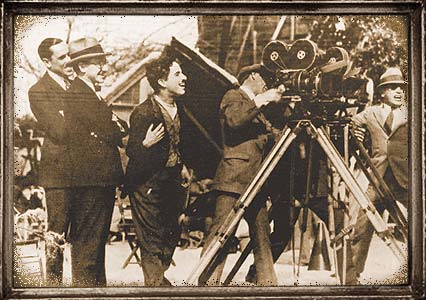Silent Film
 From Conservapedia
From Conservapedia 
Silent films are moving pictures presented without dialogue. Before 1927, virtually all films were silent films, due to the lack of a commercially practical sound system. Several short films had sound through a variety of more or less experimental processes before 1927, but none were commercially successful. After 1927, an ever-increasing proportion of commercially released films were sound films (called "talkies"), until within a few years virtually all films had sound. However, there are occasional experiments with the silent film format right down to the present day, although these are extremely rare.
Silent movies were immensely popular, and were made in a large number of countries, (especially Germany, home of the Expressionist film movement) although the United States dominated the film industry early and has continued to do so. Among the most popular stars of American silent film were Clara Bow, Rudolph Valentino, Buster Keaton, Charlie Chaplin, Roscoe "Fatty" Arbuckle, Mary Pickford and Douglas Fairbanks.
To convey dialogue, silent films used "intertitles", which were cards with the spoken dialogue or narration written on them. The intertitles would take up the entire screen, effectively interrupting the visual experience of the film (in contrast to the subtitles often used today to translate foreign language films).
Silent movies were not necessarily in black and white. There were numerous experiments with color film processes, such as the garden scene in Rudolph Valentino's The Sheik. There was also the widespread use of tinted film stock with a monochrome process, so that different sequences within the film might be "black and rose" or "black and gold", etc., suggesting a time of day (such as rose for early dawn) or setting.
Before the creation of the Hays Office, there was neither effective censorship nor a rating system, and some early silent movies do contain nudity and other sexually explicit or suggestive content.
Silent films were generally displayed with a musical accompaniment. In the more prestigious urban theaters, it was common for a full orchestra to provide music for the film. In smaller theaters, the music might be provided by a single piano or organ. In some localities with high rates of illiteracy or where there were large numbers of ethnic immigrants with poor English language skills, readers might be employed by the theaters to read (and if need be translate) the intertitles.
Examples of Silent Films[edit]
- Metropolis
- Nosferatu
- The Cabinet of Dr. Caligari
- The Birth of a Nation
- Intolerance
- The Jazz Singer
- The Phantom of the Opera
Further reading[edit]
Brownlow, Kevin (1976) The Parade's Gone By University of California Press
External links[edit]
- http://www.silentera.com/
Categories: [Movies]
↧ Download as ZWI file | Last modified: 03/26/2023 12:29:26 | 70 views
☰ Source: https://www.conservapedia.com/Silent_film | License: CC BY-SA 3.0
 ZWI signed:
ZWI signed: KSF
KSF